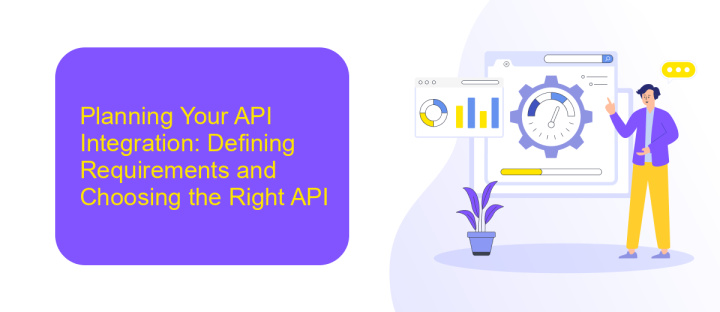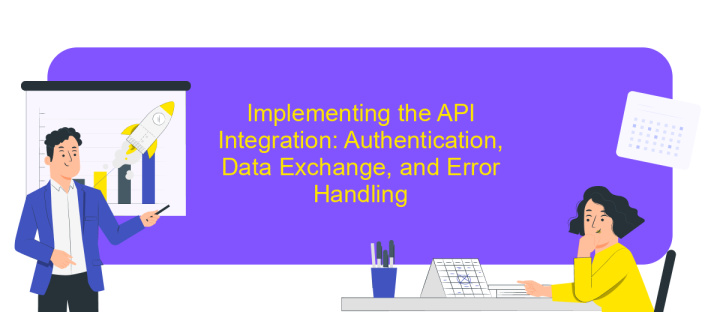Third-Party API Integration
Integrating third-party APIs has become an essential strategy for businesses seeking to enhance their digital capabilities. By leveraging these external services, companies can enrich their applications with features like payment processing, social media connectivity, and data analytics without developing them from scratch. This not only accelerates development time but also reduces costs, allowing businesses to focus on their core competencies while still delivering a robust user experience.
Understanding Third-Party APIs and Their Benefits
Third-party APIs have become an integral part of modern software development, allowing developers to leverage existing functionalities rather than building them from scratch. These APIs are external services or libraries that provide specific features, enabling seamless integration into applications. By utilizing third-party APIs, developers can significantly reduce development time and costs, while also enhancing the capabilities of their applications.
- Access to advanced features without extensive coding.
- Faster time-to-market by utilizing pre-built solutions.
- Cost-effective development by minimizing resource expenditure.
- Improved scalability and flexibility of applications.
- Enhanced user experience through integration of diverse functionalities.
Understanding the benefits of third-party APIs is crucial for businesses aiming to remain competitive and innovative. By integrating these APIs, companies can focus on their core competencies, leaving the heavy lifting to specialized service providers. Moreover, as the API ecosystem continues to grow, opportunities for innovation and collaboration expand, offering businesses the tools they need to adapt and thrive in a rapidly changing digital landscape.
Planning Your API Integration: Defining Requirements and Choosing the Right API

When planning your API integration, the first step is to define the requirements clearly. Understanding what you need from the integration helps in setting precise goals and expectations. Consider the data you want to exchange, the frequency of updates, and any security protocols required. Outline the specific functionalities you need, such as data synchronization or automated workflows. By establishing these requirements, you can ensure that the integration aligns with your business objectives and technical capabilities.
Once the requirements are defined, the next step is choosing the right API. Evaluate potential APIs based on their documentation, ease of use, and community support. Opt for APIs that offer robust security features and scalable options to accommodate future growth. Services like ApiX-Drive can simplify this process by providing a platform to seamlessly connect and automate various applications without extensive coding knowledge. Ensure that the chosen API supports the necessary data formats and protocols to integrate smoothly with your existing systems, thereby enhancing operational efficiency.
Implementing the API Integration: Authentication, Data Exchange, and Error Handling

Implementing a third-party API integration involves several critical steps to ensure seamless communication between systems. Authentication is the first step, where you typically use OAuth, API keys, or tokens to verify identity and grant access. Proper authentication ensures that only authorized users or systems can interact with the API, protecting sensitive data.
- Authentication: Choose the appropriate method (OAuth, API keys) and implement it to secure access.
- Data Exchange: Define the data format (JSON, XML) and ensure correct data mapping between systems.
- Error Handling: Implement robust error handling to manage API response errors and ensure system stability.
Data exchange is the next critical component, where you define the data formats and ensure that data is correctly mapped and transformed between the systems. Finally, implementing comprehensive error handling is crucial. It involves anticipating potential API errors and creating fallback mechanisms to maintain system stability. Proper logging and monitoring are also essential to quickly diagnose and resolve issues. Together, these steps form a robust framework for successful API integration.
Testing and Debugging Your Integration: Ensuring Reliability and Performance

Testing and debugging your third-party API integration is crucial to ensure its reliability and performance. Start by setting up a comprehensive testing environment that mirrors your production setup. This allows you to identify potential issues before they impact your users. Utilize unit tests to verify individual components and integration tests to ensure seamless interaction between your application and the API.
Debugging should be an ongoing process throughout the integration lifecycle. Employ logging to capture detailed information about API requests and responses, enabling you to trace and resolve issues efficiently. Additionally, monitor the API's performance to detect latency or downtime, which can affect user experience.
- Set up automated tests to cover various scenarios.
- Use logging to track API interactions.
- Monitor API performance and response times.
- Regularly update your integration to accommodate API changes.
By following these practices, you can ensure that your API integration remains robust and efficient. Regular testing and monitoring not only enhance reliability but also provide insights into potential optimizations, ensuring a seamless experience for your users.
Maintaining and Optimizing Your API Integration: Security, Updates, and Scalability
Maintaining and optimizing your API integration is crucial for ensuring security, implementing updates, and achieving scalability. Regularly reviewing your API's security protocols is essential to protect sensitive data and prevent unauthorized access. Employing measures such as encryption, authentication, and monitoring can help safeguard your integration. Additionally, staying informed about the latest updates from the API provider is vital. These updates often include security patches and performance improvements that can enhance the overall functionality of your integration.
Scalability is another critical aspect to consider, especially if your business is growing. Tools like ApiX-Drive can facilitate seamless integration management by offering automated workflows and real-time data synchronization. This service can help handle increased API requests efficiently, ensuring that your system remains responsive as demand grows. By leveraging such tools, you can optimize your API integration, ensuring it remains robust and adaptable to future needs. Regularly revisiting your integration strategy will help maintain its effectiveness and support your business objectives.
FAQ
What is a Third-Party API Integration?
Why should I use Third-Party API Integrations?
How can I ensure the security of my data when using Third-Party APIs?
What are some common challenges with Third-Party API Integration?
How can I simplify the process of Third-Party API Integration?
Strive to take your business to the next level, achieve your goals faster and more efficiently? Apix-Drive is your reliable assistant for these tasks. An online service and application connector will help you automate key business processes and get rid of the routine. You and your employees will free up time for important core tasks. Try Apix-Drive features for free to see the effectiveness of the online connector for yourself.

